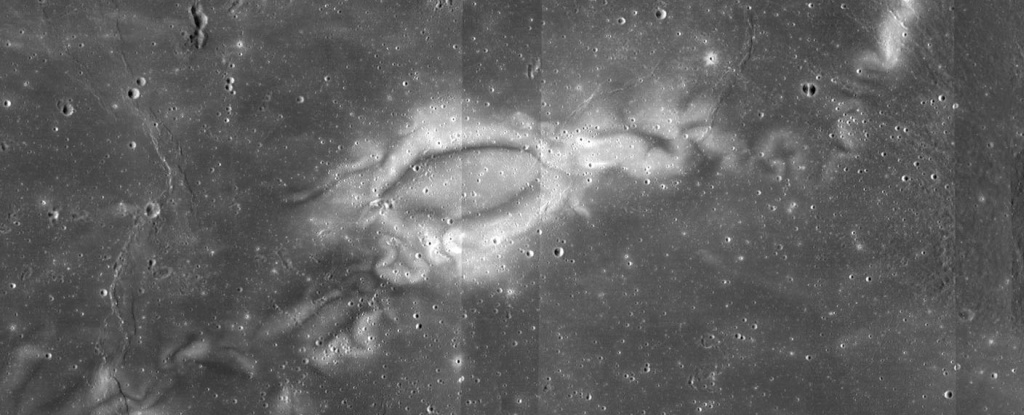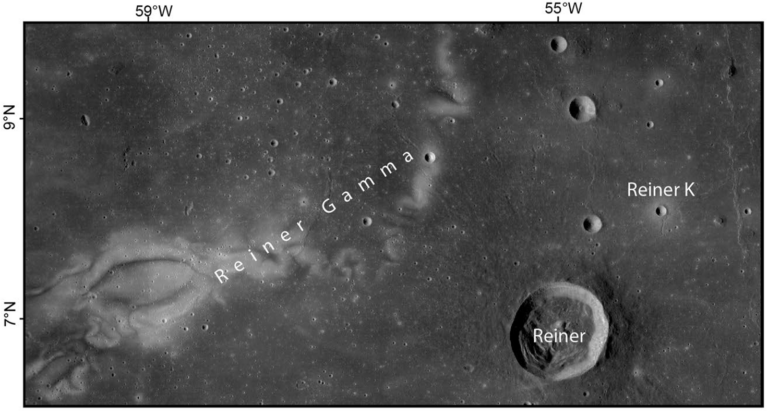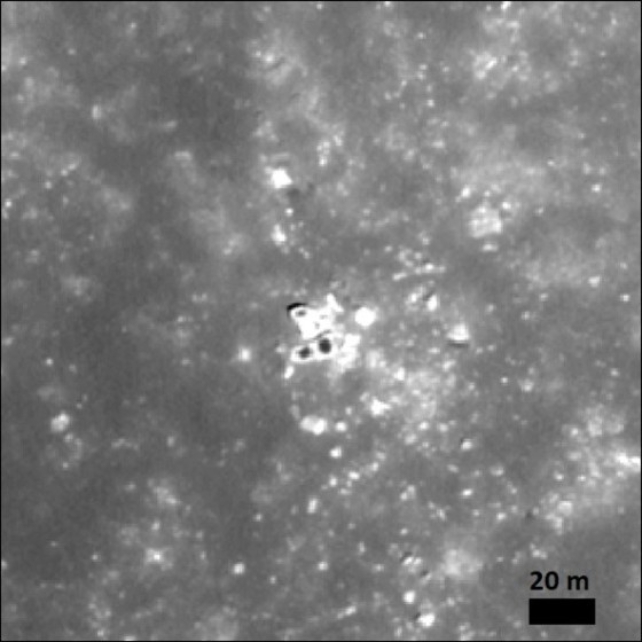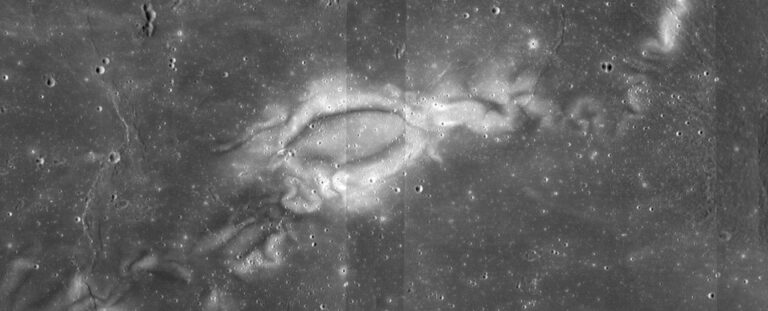Mysterious Moon Material Exhibits Intriguing Magnetic and Reflective Characteristics
Erosion does not occur on the Moon like it does on Earth due to the absence of an atmosphere and tectonic plates. Instead, the lunar surface is marked by impact craters and covered in dust. This dust holds valuable information about the Moon’s magnetic history.

Recently, a group of scientists made an intriguing discovery in the Reiner Gamma lunar swirl, an area already known for its peculiarities. They found boulders covered in reflective dust, initially mistaken for a crater. Reiner Gamma is actually a flat patch that does not cast shadows but stands out brightly against the dark backdrop of the Oceanus Procellarum lunar plain.
Lunar swirls like Reiner Gamma are believed to be caused by magnetized rocks that deflect particles from the solar wind. The magnetized material shields itself from the solar wind, leading to chemical reactions that darken the surrounding areas and create visible swirls that can be observed from Earth.
However, there are alternative theories suggesting that the swirls may have formed due to interactions between magnetic anomalies in the lunar crust and electrically charged fine dust particles propelled by micrometeorite impacts. It is also possible that both the swirls and magnetic fields originated from material ejected by comet impacts.
To gain a deeper understanding of these interactions, Ottaviano Rüsch, a planetary scientist at the University of Münster in Germany, and his colleagues meticulously analyzed approximately one million images of fractured rocks taken by NASA’s Lunar Reconnaissance Orbiter, which orbits the Moon.
Near the Reiner Gamma swirl, within the Reiner K crater, a peculiar observation was made. A single rock was discovered, exhibiting a unique reflection of light, distinct from the usual appearance of dust-covered boulders.

Rüsch, the leader of the initial 2023 survey and latest study, explains that a boulder with distinct dark areas caught their attention in a single image. This particular rock stood out from the rest due to its lower light scattering towards the sun compared to other rocks.
The unique characteristics of this rock prompted the researchers to search for similar dusty boulders using artificial intelligence. By utilizing size and reflectance as criteria, the algorithm identified approximately 130,000 potential candidates. Out of these, half were carefully examined by the researchers.
Interestingly, the less reflective rocks were found to be concentrated near the Reiner Gamma magnetic anomaly. However, not all rocks within the Reiner K crater displayed unusual reflectance.

While the rocks may have originated from the impact crater, the researchers hypothesize that the peculiar reflective characteristics are more likely attributed to a thin layer of dust that has accumulated on certain boulders, but not all. This dust is believed to possess distinct properties in terms of density, size, or structure, although these properties remain uncertain.
The team intends to utilize their findings to further explore the mechanisms behind the formation of lunar swirls. This includes investigating processes such as the lifting of dust caused by electrostatic forces or the interaction between the solar wind and areas of magnetism on the lunar surface.
Simultaneously, NASA and the researchers at the Johns Hopkins Applied Physics Laboratory are making preparations to dispatch a lunar lander to Reiner Gamma in order to examine the magnetic anomalies present on the lunar terrain. The launch of the lander is scheduled for 2024.
The study has been published in the Journal of Geophysical Research – Planets.
Do not forget to share your opinion with us to provide you with the best posts !




0 Comments